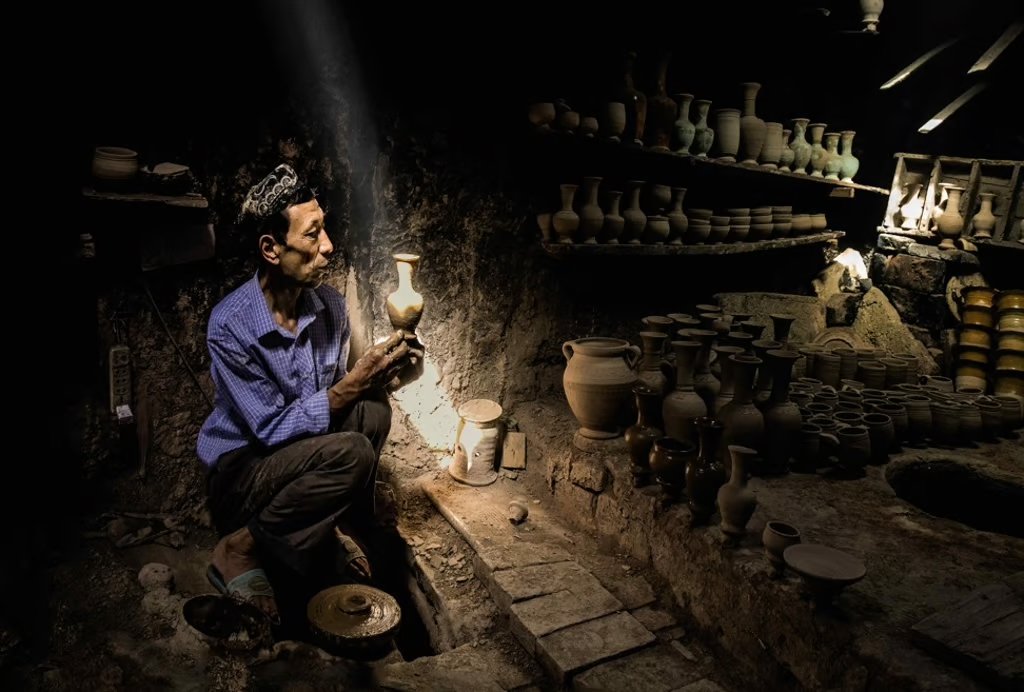Hong Kong photographer Eddy Li’s book focuses on changing times for old Silk Road nations
Entrepreneur’s 800 photos in ‘Belt and Road’, published with National Geographic magazine, shed light on everyday life and views in 30 nations
Hong Kong photographer-businessman Eddy Li, who has published a book, ‘Belt and Road’, which is a photographic record of everyday scenes in nations in Asia, Africa and Europe that will be linked by China’s ‘Belt and Road Initiative’.
When National Geographic magazine and Hong Kong-based entrepreneur and photographer Eddy Li came together, it heralded the birth of a timely project in the current global trade climate.
Li’s efforts involved the visual documentation of old Silk Road nations before the full effect of China’s “Belt and Road Initiative” takes hold across many regions.
The initiative, spearheaded by the Chinese government, will improve trade and economic integration across Asia, Europe and Africa.
The strategy is using free-trade agreements and infrastructure projects – including roads, ports and railways – to create a modern Silk Road spanning some 65 countries and includes an economic land “belt” through Eurasia and a maritime “road” to connect coastal Chinese cities to Africa and the Mediterranean.
Li’s photography book Belt and Road – the first to be published by National Geographic by a single Chinese photographer – features more than 800 pictures across its more than 500 pages.
It sheds light on everyday market life, people and scenery in more than 30 of the “Belt and Road” nations.
A charity exhibition, featuring 30 of Li’s images from the book, is now being held at one of the world’s biggest auction houses, Sotheby’s Hong Kong Gallery, with all proceeds going to the Hong Kong Chinese Arts and Culture Promotion Foundation.
A potter displays some of his products in Kashgar, Xinjiang, in China, in a photograph by Eddy Li for his ‘National Geographic’ book ‘Belt and Road’. Photo: Eddy Li
The ancient Silk Road continues to captivate the imagination of explorers.
With China’s modern-day initiative gaining momentum, National Geographic and Li recently launched the Belt and Road photo book, which captures years of Li’s work – from the heart of China through Southeast Asia all the way to Africa and onwards to Europe.
Li’s passion for photography started when he was studying for his MBA in the United States and he took extra courses in photography to get further acquainted with the activity.
For almost 30 years, the photographer-businessman has built a career in the watch manufacturing industry, which has allowed him to travel extensively to develop his business.
Over the years, he has travelled far and wide to places along the “Belt and Road” route, including Mongolia, Indonesia, Iran, Tanzania and down to Venice, in Italy, to capture the way of life there before China’s pan-continental trade initiative opens up the route to globalisation.
Li said one of his favourite places to visit had been Tibet. “[In Tibet] there is very clear sky. The sea level is very high and the pollution is less,” he said. “[The view there] and culture is very colourful. People’s dress and the dressing of the monks are entirely different.”
Despite initial concerns from his family about some of the places he visited for his book, Li said it was important for him to follow his passion, so he would never rule out revisiting a country.
“There was this massive queue at immigration for visas on arrival that made me almost faint at the sight of it,” he said.
“After waiting a good while under the searing African sun, I wanted to see if there was any way to speed the process up, maybe with a little monetary encouragement.
Mist swirls across Hong Kong’s Victoria Harbour in one of Eddy Li’s photographs from his ‘National Geographic’ book, ‘Belt and Road’. Photo: Eddy Li
“I approached one of the officers on the side and asked about an ‘express’ way.
“He looked at me and asked ‘Where are you from?’. To which I answered, ‘Hong Kong’.
“‘Hong Kong? Hong Kong – Chinese?’,’ he asked.
“‘Yes,’ I said. Then he said: ‘Chinese no need for visa – go straight through.’
“My travel group was elated as we passed immigration without further ado. Though that helped little since we had to wait three hours on the other side as one of our travel companions was Canadian and had no such luck of skipping the queue.”
In 1991, he was honoured as one of the Ten Outstanding Young Persons of Hong Kong, and in 2012, he was appointed a Justice of Peace.
In 2017, he was awarded Hong Kong’s Gold Bauhinia Star.
His work has been published regularly in travel and photography publications. He is already planning a second photo, for a possible publication next year.
Li’s charity exhibition at Sotheby’s Hong Kong Gallery, which opened on July 11, runs until July 23.
Original article published on South China Morning Post (Jul 13, 2018)


